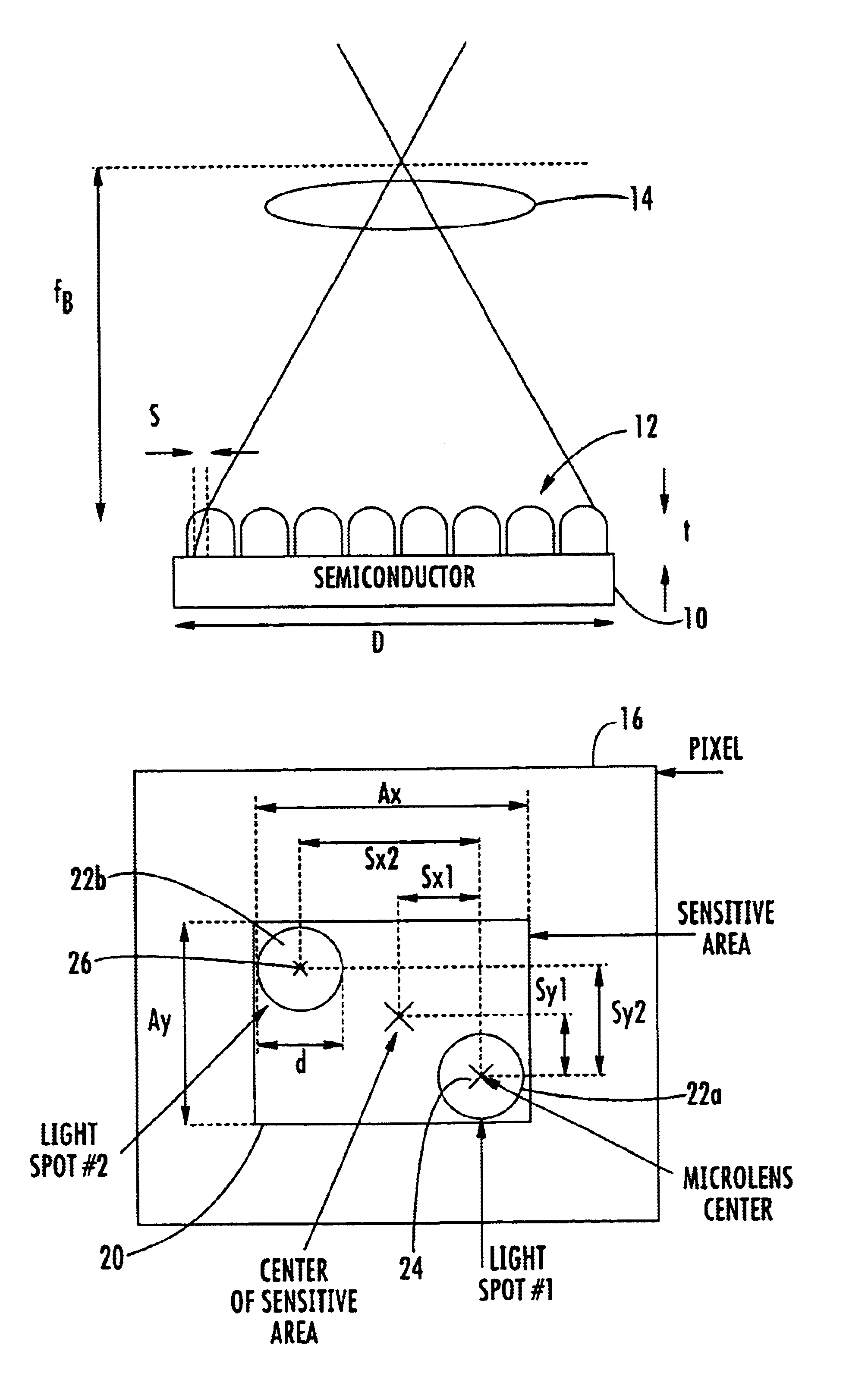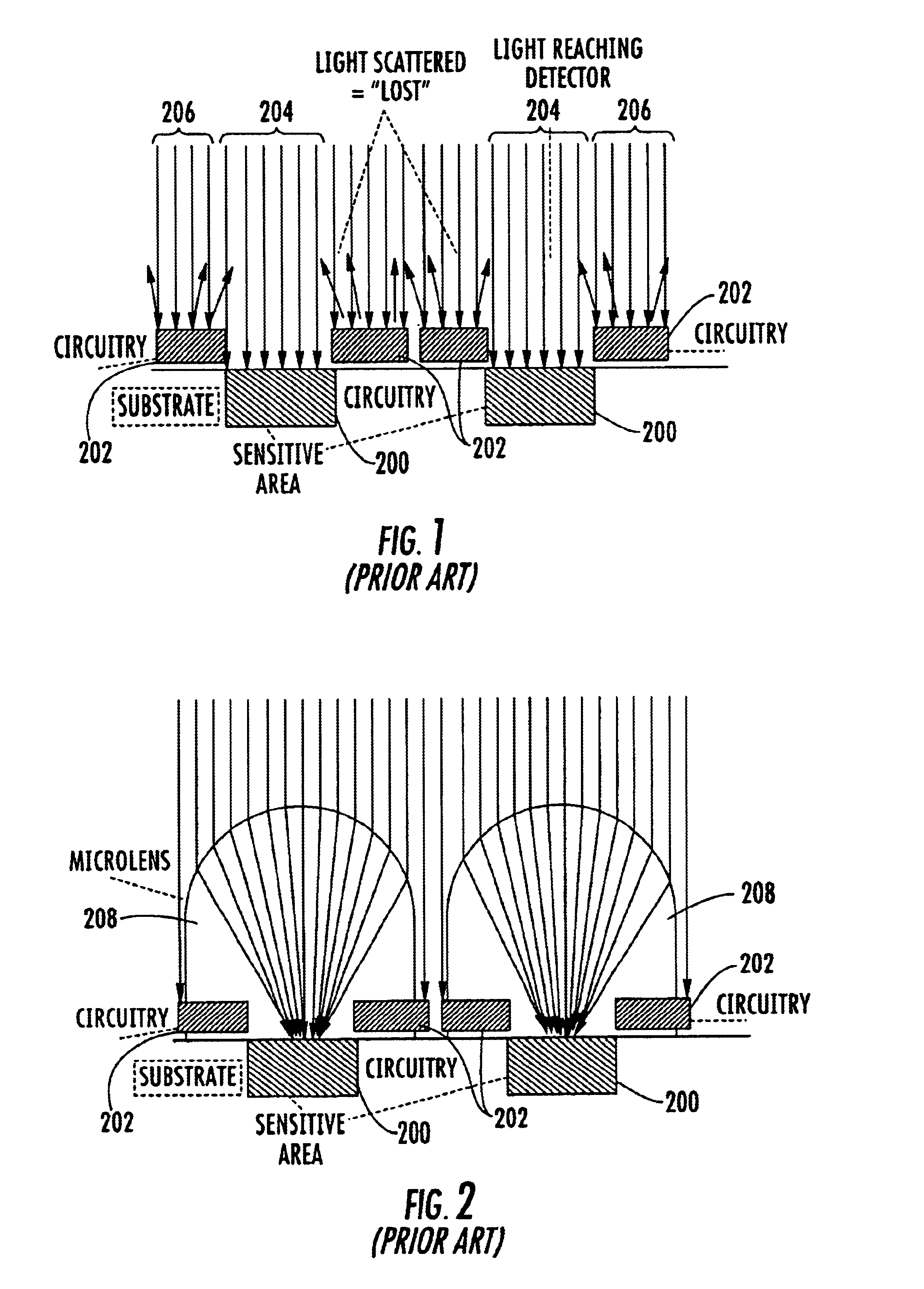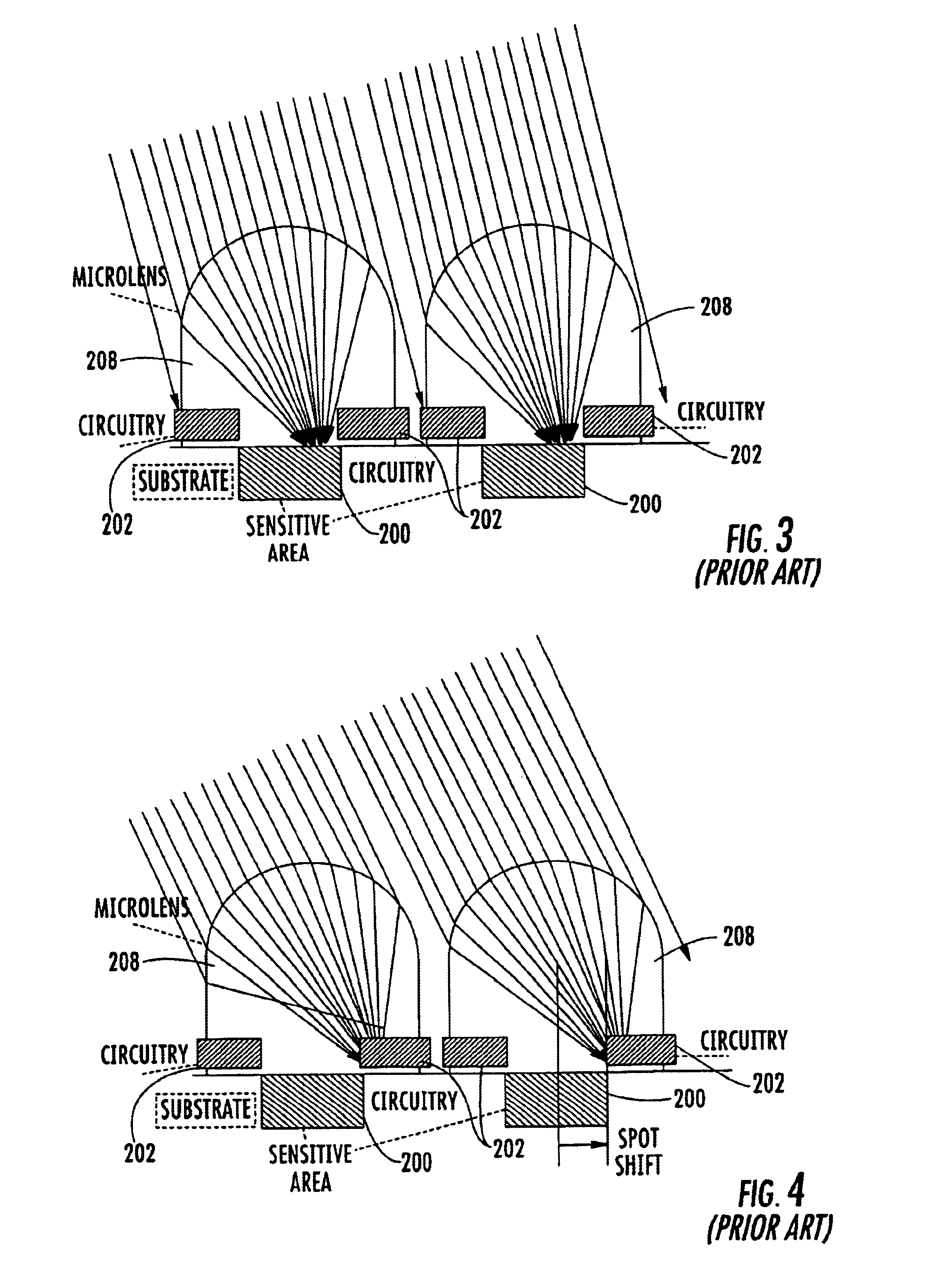Solid state image sensors and microlens arrays
a technology of image sensors and microlens arrays, applied in the field of solid state image sensors, can solve the problems of loss of sensitivity, degraded performance, loss of sensitivity, known as “vignetting” and other problems, and achieve the effect of reducing vignetting and mitigating the aforesaid disadvantages
- Summary
- Abstract
- Description
- Claims
- Application Information
AI Technical Summary
Benefits of technology
Problems solved by technology
Method used
Image
Examples
Embodiment Construction
[0028]Referring now to FIG. 6, an imaging system according to the present invention includes a solid state image sensor 10 having a length / width D, a microlens array 12 having a thickness t and a refractive index n, and primary lens system 14 having a focal length fB. For a pixel at the edge of the sensor 10, the focussing spot is shifted away from the center of the sensor as a result of off-axis illumination by an amount s, where:
s=D×t / (2×fb×n). (1)
The corresponding microlens would have to be shifted by the same amount in the opposite direction to compensate for this. Equation (1) is simplified for a one-dimensional (linear) sensor array, but is easily extended to two dimensions for a rectangular sensor array.
[0029]It will be understood that the present analysis is applicable to a range of types of primary lens systems including single- and multi-element lenses. Turning now to FIG. 7, the corresponding situation for a pixel 16 and microlens 18 located at the top left hand corner o...
PUM
 Login to View More
Login to View More Abstract
Description
Claims
Application Information
 Login to View More
Login to View More - R&D
- Intellectual Property
- Life Sciences
- Materials
- Tech Scout
- Unparalleled Data Quality
- Higher Quality Content
- 60% Fewer Hallucinations
Browse by: Latest US Patents, China's latest patents, Technical Efficacy Thesaurus, Application Domain, Technology Topic, Popular Technical Reports.
© 2025 PatSnap. All rights reserved.Legal|Privacy policy|Modern Slavery Act Transparency Statement|Sitemap|About US| Contact US: help@patsnap.com



